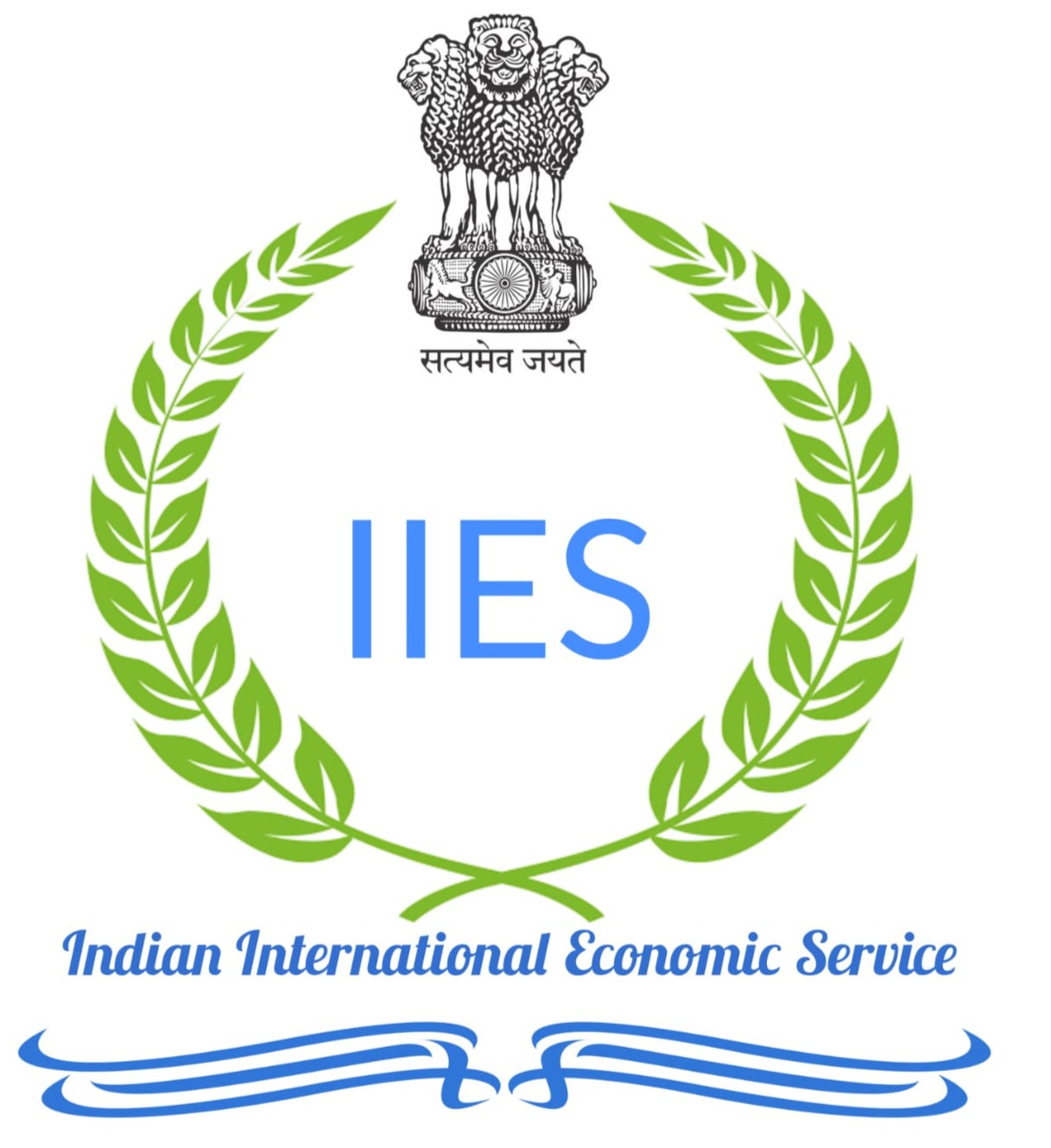Fee of No Objection Certificate अनापत्ति प्रमाणपत्र (NOC) शुल्क
This document outlines the No Objection Certificate (NOC) fees established by the Indian International Economic Service (IIES). These fees are designed to cover the administrative costs, document verification, and certification expenses associated with the process. The fee structure not only streamlines the application process but also ensures that applications are treated seriously and dealt with in a timely manner.
यह दस्तावेज भारतीय अंतर्राष्ट्रीय आर्थिक सेवा (IIES) द्वारा निर्धारित अनापत्ति प्रमाणपत्र (NOC) शुल्क का विवरण प्रस्तुत करता है। ये शुल्क प्रशासनिक लागत, दस्तावेज़ सत्यापन और प्रमाणन व्यय को कवर करने के लिए निर्धारित हैं। शुल्क संरचना आवेदन प्रक्रिया को सुव्यवस्थित करती है और यह सुनिश्चित करती है कि आवेदनों का समयबद्ध और गंभीरता से निस्तारण हो।
The IIES issues NOCs and has set specific fees which may vary based on the type of international transaction or the amount of funds involved. According to IIES policies, the organization issues an NOC for a maximum amount of ₹25,000 crores at one time. This means that if an individual or institution requires a certificate for a higher amount, they must obtain the NOC through separate applications or in a phased manner.
IIES एनओसी जारी करता है और इसके लिए विशिष्ट शुल्क निर्धारित हैं, जो अंतर्राष्ट्रीय लेनदेन के प्रकार या धनराशि के आधार पर बदल सकते हैं। IIES की नीति अनुसार, एक बार में अधिकतम ₹25,000 करोड़ तक की राशि के लिए NOC जारी किया जा सकता है; इससे अधिक राशि के लिए चरणबद्ध/अलग-अलग आवेदन आवश्यक हैं।
The NOC fee structure is generally determined by the application amount, the complexity of the process, and the documentation involved. The purpose of this fee is not just to cover administrative costs but also to ensure that applicants comply with the necessary legal and financial standards. The IIES conducts this process with complete transparency and according to standard rules to prevent any kind of fraud or financial irregularity.
NOC शुल्क संरचना सामान्यतः आवेदन राशि, प्रक्रिया की जटिलता और संलग्न दस्तावेजों के आधार पर तय होती है। इसका उद्देश्य केवल प्रशासनिक खर्चों की पूर्ति नहीं, बल्कि आवश्यक विधिक व वित्तीय मानकों के अनुपालन को सुनिश्चित करना भी है। IIES इस प्रक्रिया को पूर्ण पारदर्शिता और मानक नियमों के अनुसार संचालित करता है ताकि किसी प्रकार की धोखाधड़ी या वित्तीय अनियमितता रोकी जा सके।
In summary, the fee set by the IIES for obtaining an NOC is part of an essential administrative process, and the certificate can be issued for a maximum amount of ₹25,000 crores at a time. This limit and fee policy reflect the institution's responsibility for financial control and monitoring international monetary flows.
संक्षेप में, IIES द्वारा निर्धारित NOC शुल्क आवश्यक प्रशासनिक प्रक्रिया का हिस्सा है तथा एक बार में अधिकतम ₹25,000 करोड़ तक के प्रमाणपत्र जारी किए जा सकते हैं। यह सीमा और शुल्क नीति अंतर्राष्ट्रीय धन प्रवाह के वित्तीय नियंत्रण व पर्यवेक्षण के प्रति संस्थान की जिम्मेदारी को दर्शाती है।
Key Points on IIES NOC Fees IIES NOC शुल्क के मुख्य बिंदु
Fee Category: शुल्क श्रेणी:
| Categoryश्रेणी | Descriptionविवरण | Estimated Feeअनुमानित शुल्क |
|---|---|---|
| General Applicantsसामान्य आवेदक | General fee for smaller amounts.कम राशि के लिए सामान्य शुल्क। | Approximately ₹10,000 |
| Large Amounts or Special Purpose Cases उच्च राशि या विशेष प्रयोजन के मामले | For amounts of ₹ 1 Crore or more or special purpose applications. ₹1 करोड़ या अधिक राशि अथवा विशेष प्रयोजन के आवेदन हेतु। | ₹2,17,500 or more |
| Foreign Citizens or Institutionsविदेशी नागरिक/संस्थाएँ | Fees may be charged in USD as per international शुल्क अंतर्राष्ट्रीय प्रचलन के अनुसार USD में लिया जा सकता है |
Payment Process: भुगतान प्रक्रिया:
- The fee must be paid through the official online portal or website authorized by the IIES. शुल्क IIES द्वारा अधिकृत आधिकारिक ऑनलाइन पोर्टल/वेबसाइट के माध्यम से जमा करना आवश्यक है।
- After payment, the applicant receives a Payment Reference ID, which is mandatory to attach with the application form. भुगतान के बाद आवेदक को भुगतान संदर्भ आईडी प्राप्त होती है, जिसे आवेदन पत्र के साथ संलग्न करना अनिवार्य है।
Fee Refund Policy: शुल्क वापसी नीति:
- The fee will not be refunded if the application is rejected due to technical reasons or incomplete documentation.तकनीकी कारणों या अपूर्ण दस्तावेज़ों के कारण आवेदन अस्वीकार होने पर शुल्क वापस नहीं किया जाएगा।
- A refund may be issued only if the application is canceled due to an institutional error.केवल संस्थागत त्रुटि के कारण आवेदन निरस्त होने पर ही शुल्क वापसी संभव है।
Additional Charges (If Applicable): अतिरिक्त शुल्क (यदि लागू हो):
- Additional fees may apply if the application requires a special investigation or additional certification. विशेष जांच या अतिरिक्त प्रमाणन की आवश्यकता होने पर अतिरिक्त शुल्क लागू हो सकता है।
- These charges are communicated separately.
Role of the Fee in the Process: प्रक्रिया में शुल्क की भूमिका:
- The NOC application process does not proceed without fee payment.शुल्क भुगतान के बिना NOC प्रक्रिया आगे नहीं बढ़ती।
- It is mandatory to ensure the validity and official scrutiny of the NOC process. NOC प्रक्रिया की वैधता और आधिकारिक परीक्षण सुनिश्चित करना अनिवार्य है।
NOC Fee NOC शुल्क
| Sl. Noक्रम संख्या | Fund Bracketनिधि श्रेणी | Base NOC Feeमूल NOC शुल्क | Surchargeअधिभार | Total Payableकुल देय | Subsidy on Surchargeअधिभार पर सब्सिडी | Depositorजमा कर्ता |
|---|---|---|---|---|---|---|
| 01 | Up to 2 Crore to 100 Crore | ₹217,500.00 | 5% | ₹228,375.00 | 50% | Agent / Main File Holder |
| 02 | Up to 101 Crore to 200 Crore | ₹290,000.00 | 7% | ₹310,300.00 | 50% | Agent / Main File Holder |
| 03 | Up to 201 Crore to 400 Crore | ₹435,000.00 | 8% | ₹469,800.00 | 45% | Agent / Main File Holder |
| 04 | Up to 401 Crore to 499 Crore | ₹725,000.00 | 10% | ₹797,500.00 | 10% | Agent / Main File Holder |
| 05 | Up to 500 Crore to 999 Crore | ₹10,15,000.00 | 15% | ₹11,67,250.00 | 15% | Agent / Main File Holder |
| 06 | Up to 1000 Crore to 2500 Crore | ₹13,77,500.00 | 20% | ₹16,53,000.00 | 30% | Agent / Main File Holder |
| 07 | Up to 2501 Crore to 4999 Crore | ₹26,10,000.00 | 30% | ₹33,93,000.00 | 25% | Agent / Main File Holder |
| 08 | Up to 5000 Crore to 10000 Crore | ₹40,60,000.00 | 35% | ₹54,81,000.00 | 25% | Agent / Main File Holder |
| 09 | Up to 10001 Crore to 15000 Crore | ₹75,00,000.00 | 45% | ₹1,05,00,000.00 | 20% | Agent / Main File Holder |
| 10 | Up to 15001 Crore to 25000 Crore | ₹92,40,00,000.00 | 50% | ₹1,38,60,000.00 | 10% | Agent / Main File Holder |
Purpose —
The NOC fee serves two main purposes: (1) revenue generation for the Central Government, and (2) a compliance filter — collecting evidence of applicant’s ability and knowledge about incoming foreign funds. The requirement to pay a prescribed fee helps deter and detect potential money-laundering, shell transactions, or cases where the applicant is unaware of funds credited to their account.
If fee is not deposited on time —
- Automatic Hold / Application Pendency: If the prescribed NOC fee is not deposited within the initial submission window (e.g., 30 calendar days from application), the NOC application will be placed on hold (status: “Fee Pending”) and processing will stop.
- Risk Flag & Preliminary Screening: Any application where the fund amount exceeds a threshold (for example, ₹10 lakh) but the fee remains unpaid will be automatically flagged for enhanced due diligence (EDD). This flag triggers KYC re-verification, source-of-fund documentation requests (contracts, donor details, remittance advices), and a transaction history review.
- Notice to Applicant: A written notice (digital and/or physical) will be sent giving the applicant a final opportunity (e.g., 15 days) to pay the fee and provide missing documents. The notice must clearly state consequences of non-payment, including possible reporting.
- Escalation & Suspicion of ML: If fee remains unpaid and document gaps persist, the case will be escalated to the designated compliance officer and, where warranted, reported to Financial Intelligence Unit — India (FIU-IND) or other competent authority as a Suspicious Transaction Report (STR) for possible money-laundering investigation.
- Temporary Freeze / Hold on NOC & Recommendation to Bank: IIES may recommend to the relevant bank to temporarily freeze or flag the concerned inward remittance account for further verification, following legal procedures and after consulting legal/advisory team.
- Refusal / Rejection of NOC: After full internal review and if satisfactory explanations/documents are not provided, the NOC may be formally refused. The applicant will be informed of reasons and appeal mechanism (if any).
- Audit Trail & Recordkeeping: All actions, notices and decisions must be recorded in the application management system for audit, compliance and future reference.
- Penalties & Blacklisting (Policy Option): Policy can specify penalties, additional fees or temporary blacklisting of applicants/agents who deliberately avoid fee payment or provide false documentation. Any such measure must comply with applicable laws and provide procedural fairness.
Risk Indicators - Signs that may point to Money Laundering (examples)
The purpose of the NOC is:
- Sudden, large-scale credit of foreign funds that does not align with the business activities of the concerned individual/company.
- Failure to pay the prescribed NOC fee, despite the fund amount being very high.
- Applicant failing to provide clear source-of-funds details or not submitting supporting documents.
- Unclear identification of the beneficial owner, or the presence of a shell company.
- Large-scale funds arriving in the account through many small remittances (structuring).
- The presence of these indicators recommends Enhanced Due Diligence (EDD) and mandatory legal reporting.
Sample Notice Wording
“Your NOC application (Ref: ####) is currently pending due to non-payment of prescribed NOC fee. Please deposit the fee and submit required documents within 15 days, failing which the application will be held and may be escalated to compliance authorities for further action.”
Implementation checklist for IIES
- Define legally-approved fee slabs and surcharge/subsidy policy.
- Implement application portal that blocks further processing until fee paid or grace period exhausted.
- Build automated flags for high value cases where fee not paid.
- Define required KYC & source-of-fund documents per bracket.
- Appoint compliance officer and escalation matrix.
- Define reporting format & thresholds for FIU-IND / law enforcement.
- Keep audit trail & digital receipts for every payment.
- Communicate clear timelines and appeal mechanism to applicants.


